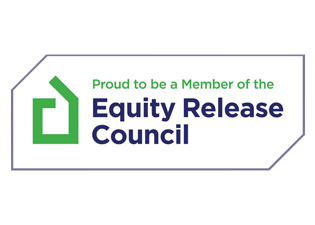The post-lockdown boom means that there are an extra 140,000 sales in the pipeline and the South East is leading the surge
The number of agreed property sales has soared by more than 50%, creating a queue of almost 420,000 buyers rushing to complete before the stamp duty deadline, new data shows.
The post-lockdown property “mini-boom”, combined with the temporary tax break, means there are an extra 140,000 sales in the pipeline compared to this time last year, according to property website Zoopla. This means there are 418,000 sales yet to complete, worth £112bn.
So far in October, the number of sales agreed is 52.7% higher than in the same month in 2019. But the pace of growth is slowing, as agreed sales peaked in August at 62.1% above the 2019 level. Demand has been highest in the South East, where sales agreed in the year to date were 15% above the same period in 2019. Across Britain, the average increase is 3%.
Buyers at risk of losing £15,000 tax savings
The stamp duty holiday means buyers can save up to £15,000 in tax if they complete their transactions by 31 March. But the enormous volume of transactions in the pipeline means that there is an increasing risk that sales will miss the cut-off.
In a normal year, the respective shares of sales agreed in November and December that complete before March 31 is just 92% and 81%. If sales are agreed in January, little more than half would complete in time.
But these numbers do not account for the fact that buyers now face protracted delays at every stage of the purchasing process. Mortgage lenders, surveyors, and local authorities are grappling with the surge with reduced processing capacity.
Nick Leeming, of Jackson-Stops estate agents, said that the surge “has stress tested the entire home buying system”. Transactions are taking more than 100 days from sale agreed to completion, but the volume of sales mean that this could increase in the short term, Zoopla said.
The tax deadline will be a deal-breaker for many buyers. Amy Williams, 28, is a first-time buyer who has agreed to purchase a one-bedroom flat in Camberwell, south London. Without the stamp duty holiday, she will have to pay an extra £4,000 upfront in cash.
“Without the SDLT relief, I wouldn’t have been able to afford my property,” said Ms Williams.
Homeowners are racing to sell
Sellers are rushing to secure buyers before the tax incentive evaporates. Across Britain, the number of homes for sale is up 18% year-on-year. In London, where the high price of homes means that many buyers can get the maximum tax saving, the supply of homes for sale is up 39%.
The time pressure is pushing up prices. Price growth in September hit 3% across the UK, a two-and-a-half-year high, up from 1.1% this time last year. Every English city registered price growth. In Nottingham, Manchester and Leeds, values were up 5.1%, 4.6% and 4.5% respectively. Zoopla said it expected growth to continue for the next two to three months.
Richard Donnell, of Zoopla, said “The stamp duty deadline will focus the minds of committed movers in the near term, which will support sales volumes and make for a strong first quarter of sales completions in 2021.”
The boom conceals deep-seated problems
The surge amplified by the stamp duty holiday is masking deeper problems in the property market. The median price of a home listed on Zoopla is 10% higher than this time last year. This reflects seller optimism, but also the types of property for sale, as vendors bring bigger, more expensive homes to market.
The stamp duty holiday means that homes closest in value to the £500,000 nil-rate band come with the biggest proportionate tax savings. At the same time, buyer demand is greatest for larger detached properties.
Less wealthy demographics are more reliant on the low deposit mortgages that lenders have withdrawn en masse and are more exposed to rising unemployment. But the relative slowdown in this sector is being concealed by the large volume of more valuable transactions.
“The strength of the market nationally is masking weakness… sales are slowing in areas where households are typically on lower incomes and more sensitive to economic uncertainty and more restricted cash availability,” said Mr Donnell.
Zoopla added that once the post-lockdown backlog has filtered through the system by the middle of next year, the polarisation will become more apparent, as agreed sales take several months to complete.
Andrew Burrell, of research firm Capital Economics, said that as pent-up demand unwinds “we expect house price growth to slow to a standstill next year”.
Lead indicators suggest pent-up demand has nearly run its course. Buyer demand, which Zoopla measures using a combination of searches and inquiries, is 40% higher than in 2019, but it has slowed to the level seen at the beginning of March. Yet the rush to transact before March 2021 will boost sales figures in the coming months. Zoopla expects price growth to hit 4% in the short-term.
In Scotland and Wales, the number of sales agreed in the year to date versus the same period in 2019 is still down by 13.9% and 10%, but the difference can be attributed to the fact that both housing markets opened much later than the English market after lockdown.
[Source: telegraph.co.uk/property, 28 October 2020]
Want to know more? Get in touch!







